Are you facing the difficult decision of terminating a contractor due to non-performance? It's a challenging yet necessary step for ensuring your project stays on track and meets quality standards. In this article, we'll guide you through the key elements of crafting a termination letter that is clear, professional, and legally sound. Stick around as we share valuable tips and a helpful template to make this process smoother for you.

Contractor Information
The non-performance termination of a contractor involves critical details surrounding the agreement. Contractor identification includes the registered business name, often associated with local regulations and identification numbers. Project specifics such as assignment title or reference number provide context to the contractual obligations. Performance metrics relating to deadlines, quality standards, and compliance levels highlight areas of concern justifying termination. The date of notice indicates the timeline for remediation, while records of prior communications or warnings emphasize the history of performance issues. Finally, any upcoming payment schedules related to the contract necessitate clarity to avoid disputes post-termination.
Non-Performance Details
Non-performance in construction projects can lead to significant delays and financial losses. For example, a contractor failing to meet deadlines outlined in the contract may result in penalties as high as 10% of the project value. A construction site located in New York City, where local regulations and strict compliance are paramount, could face serious legal ramifications. If a contractor does not provide the required materials such as high-grade steel or certified insulation within the agreed timeline, this could halt progress, necessitating costly remediation actions and impacting subsequent phases of construction. Furthermore, inadequate quality control leading to substandard workmanship might trigger an inspection failure, causing additional delays and requiring rework to meet safety and regulatory standards, profoundly affecting overall project completion. Thus, documenting non-performance details, including specific dates, affected work sectors, and financial implications, is essential to initiate termination proceedings effectively.
Termination Clause Reference
In the context of contract management, non-performance by contractors can lead to legal consequences as stipulated in the termination clause. This clause, often found in contractual agreements, outlines specific conditions under which either party may terminate the contract due to lack of adherence to agreed-upon obligations and standards. Key elements include performance metrics, timelines, and deliverables, which are critical in assessing contractor performance. For instance, if a contractor fails to meet project milestones, as defined in the contract, a formal notice of termination may be issued, referencing the termination clause to ensure compliance with legal protocols. Additionally, the consequences of non-performance, such as potential financial penalties or the obligation to return advance payments, should be clearly delineated to protect the interests of the contracting party.
Outstanding Obligations
Contractor non-performance termination due to outstanding obligations reflects serious Project management issues. Timely completion of milestones (for instance, the 180-day deadline for construction) is paramount for contractual agreements. In this scenario, critical tasks such as submitting necessary documentation (like safety reports or design plans) remain unmet, breaching the terms outlined in the contract. This failure can lead to financial losses, impacting budget forecasts significantly. Legal ramifications often arise when non-performance occurs, necessitating careful documentation to avoid disputes. Maintaining constant communication with stakeholders during such situations is crucial for resolution and mitigation efforts.
Formal Termination Date
A formal termination notice for contractor non-performance outlines the specifics of the termination process due to unmet obligations. Key elements include the contractor's name, contract reference number, detailed description of the breaches or performance failures, and evidence documenting these deficiencies. The termination date (must specify a date, for instance, November 30, 2023) marks the official end of the contractual relationship, allowing legal and logistical considerations to be addressed. It is crucial to maintain compliance with any local laws or regulations governing contract terminations, including notice periods or requirements for final payments.
Letter Template For Contractor Non-Performance Termination Samples
Letter template of contractor non-performance termination due to contract breach.
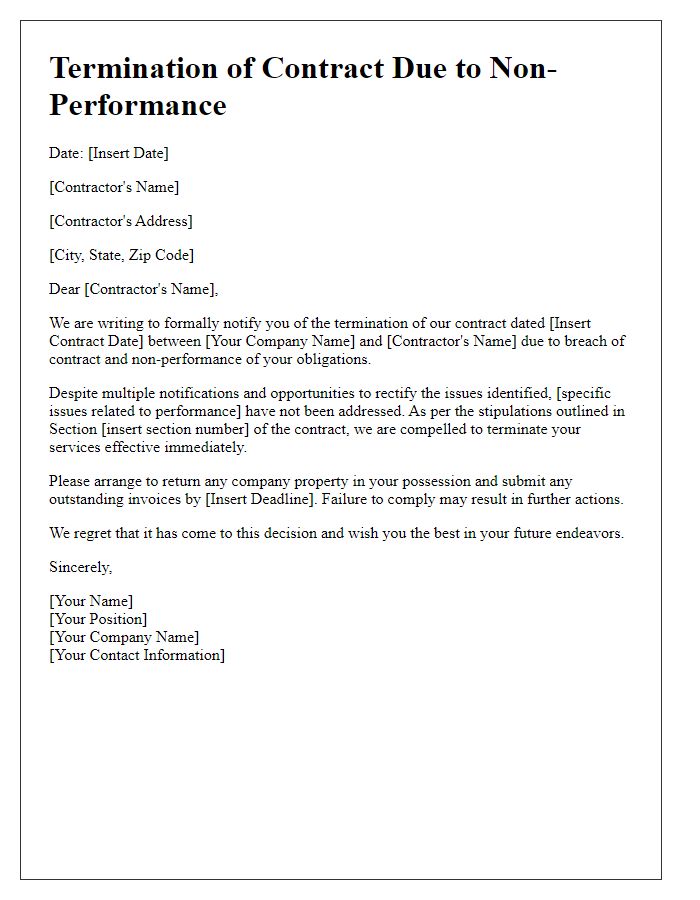
Letter template of contractor non-performance termination for failure to meet deadlines.
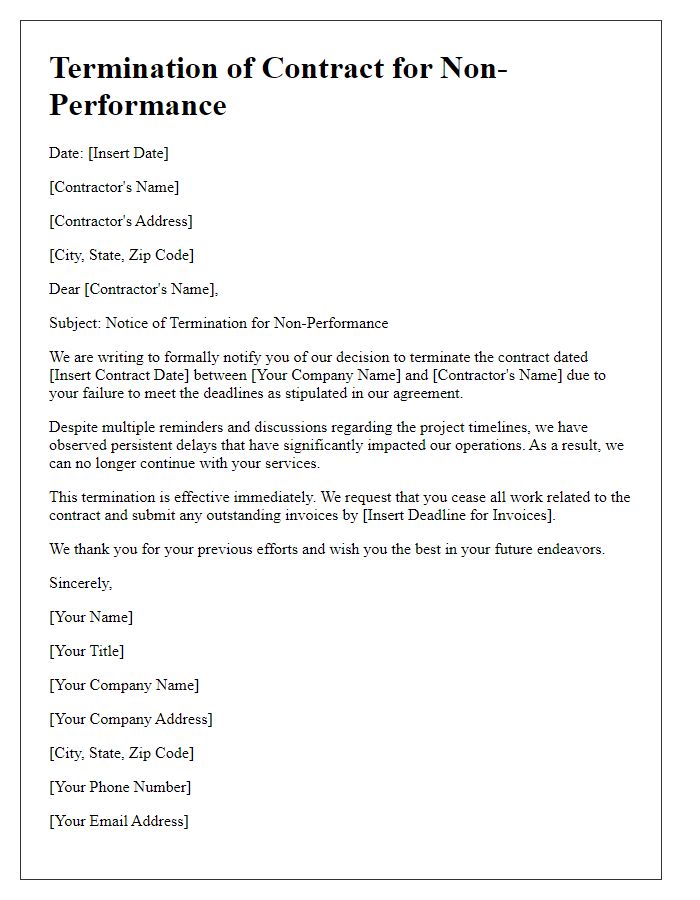
Letter template of contractor non-performance termination for inadequate quality of work.
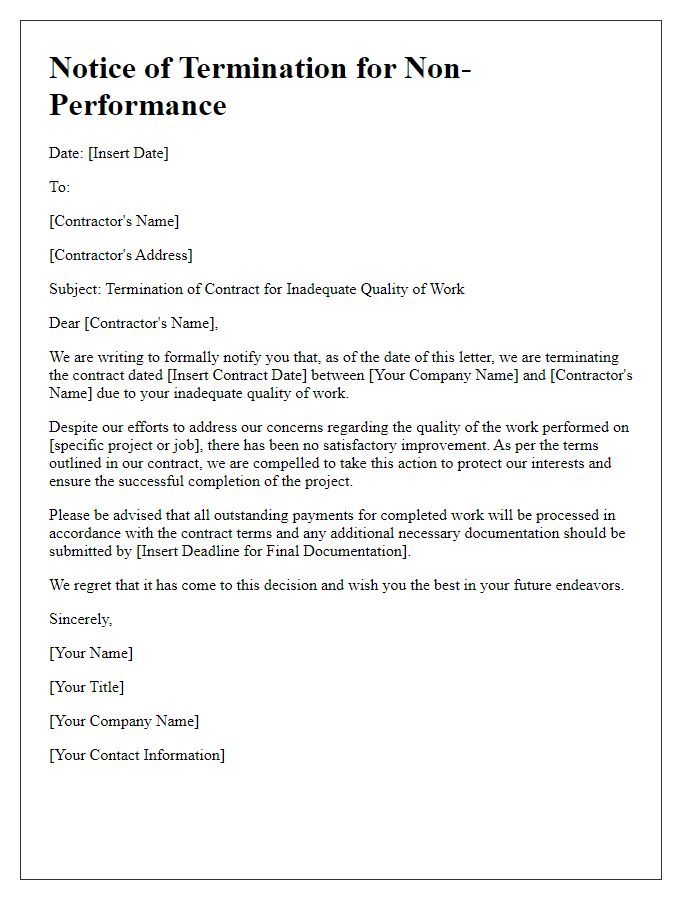
Letter template of contractor non-performance termination citing communication issues.
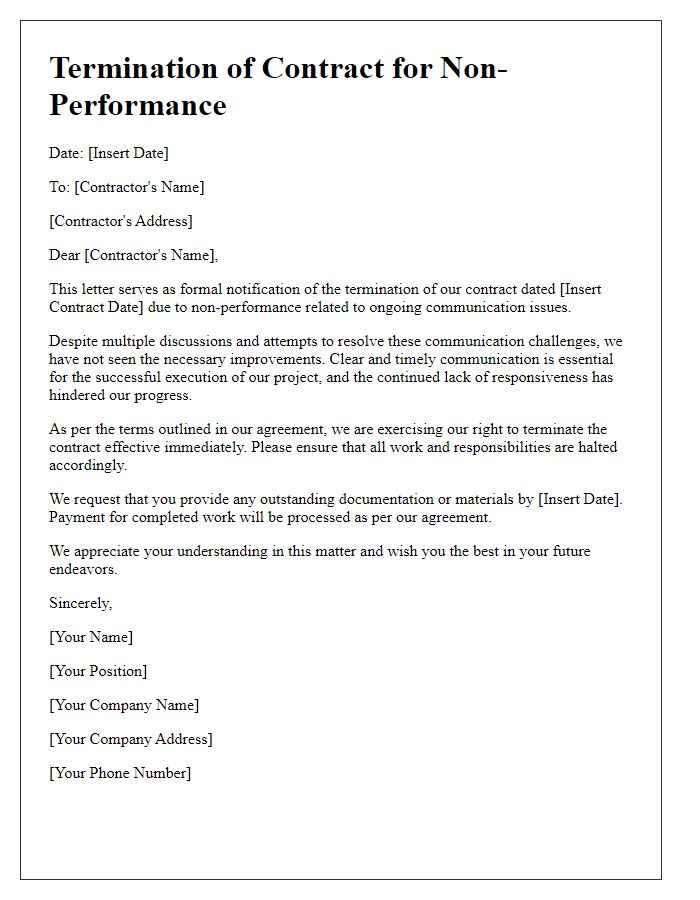
Letter template of contractor non-performance termination for safety violations.
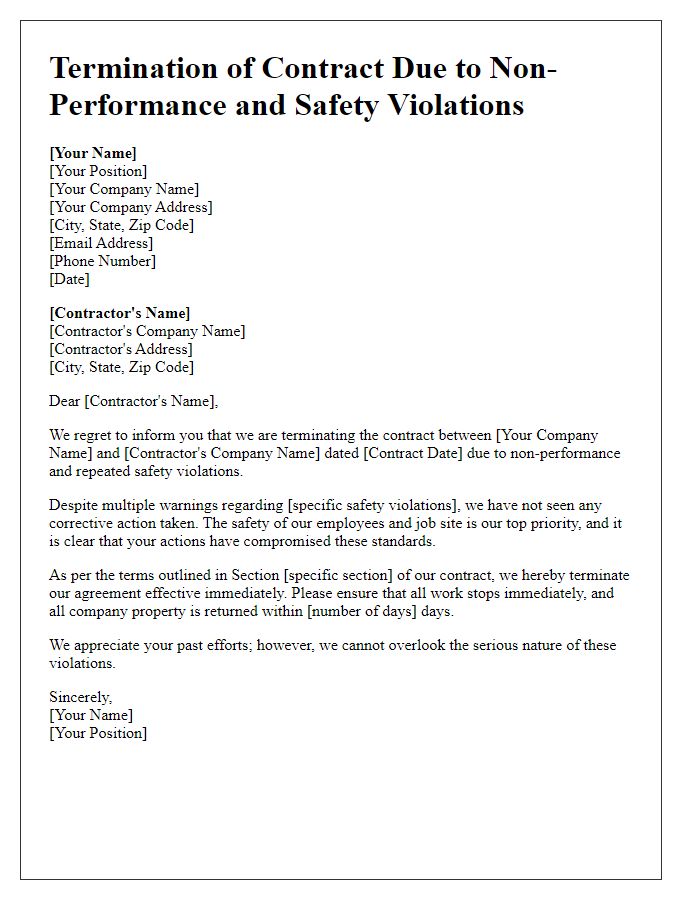
Letter template of contractor non-performance termination based on unsatisfactory progress.
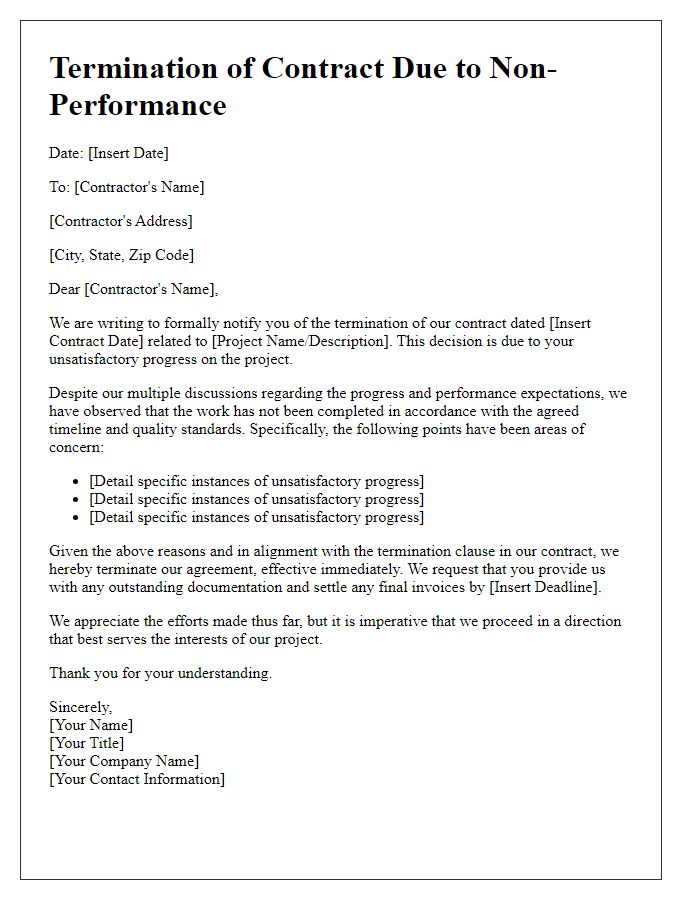
Letter template of contractor non-performance termination for non-compliance with project specifications.
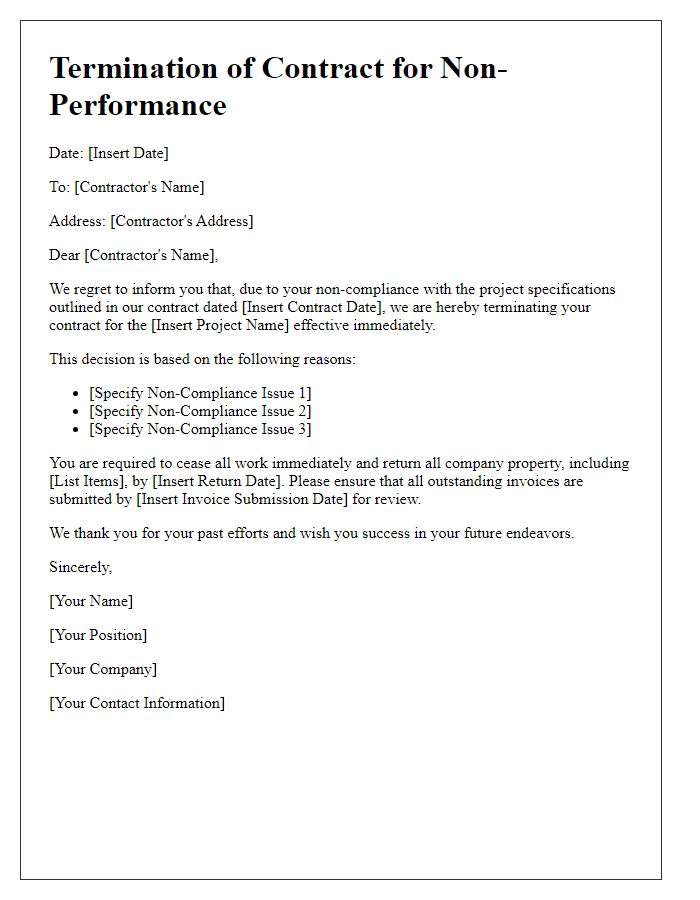
Letter template of contractor non-performance termination due to unapproved subcontractors.
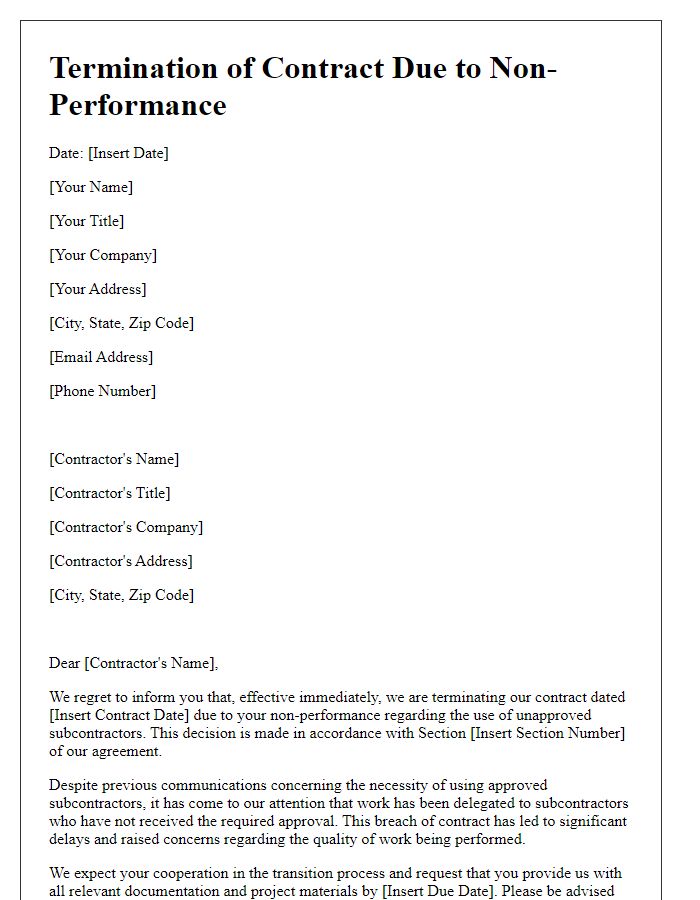
Letter template of contractor non-performance termination for lack of necessary resources.
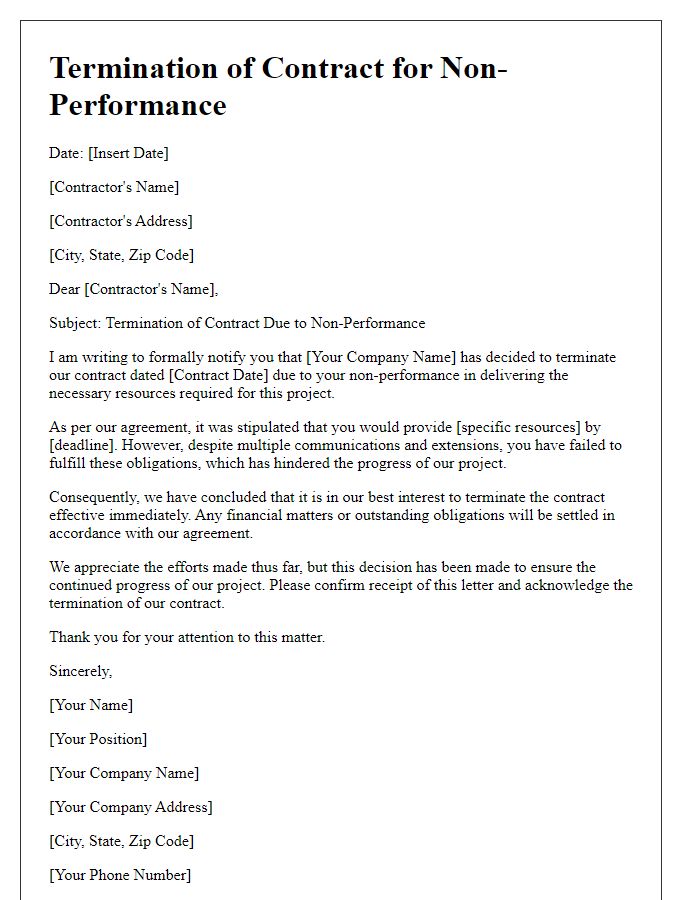

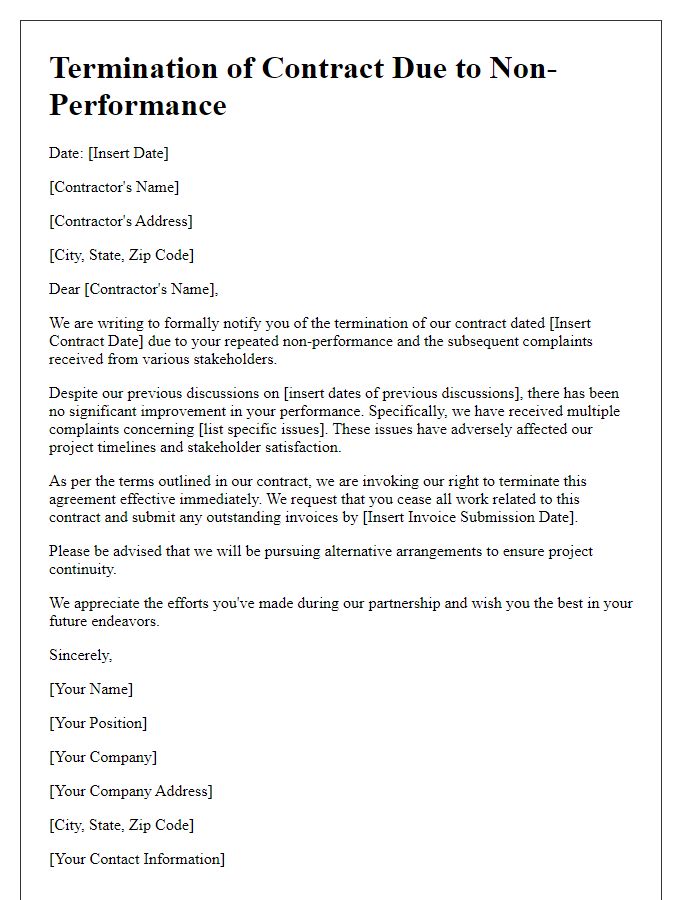


Comments